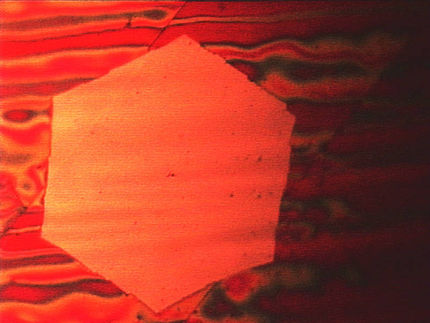Nanoscience: Weak force, strong effect
Advertisement
The van der Waals force, a weak attractive force, is solely responsible for binding certain organic molecules to metallic surfaces. In a model for organic devices, it is this force alone that binds an organic film to a metallic substrate. This data, recently published in Physical Review Letters, represents the latest findings from a National Research Network (NRN) supported by the Austrian Science Fund FWF. These findings mean that numerous calculation models for the physical interactions between thin films and their carrier materials will need to be revised.
Although they fulfil complex functions when used, for example, as computer chips, inorganic semiconductors have a simple construction that greatly limits their application. The same does not apply to semiconductors made of organic materials. Because organic molecules are extremely flexible, they can be used in a whole new range of applications. However, before this advantage can be exploited to the full, scientists need to have a better understanding of the far greater complexity of these materials over their inorganic counterparts.
Organic semiconductors are manufactured by applying thin films of an electrically conductive organic material to a carrier surface. When carrying out this process, it is important to understand the interactions that occur at the interfaces between the carrier material and the organic material. A team from the "Interface controlled and functionalised organic thin films" National Research Network (NRN) at the University of Leoben has made an important contribution to scientific understanding in precisely this field. Using complex calculations, the team has been able to show that a thin film of organic thiophene is held on to a copper surface solely by the van der Waals force. The team calculated that the adsorption energy involved is -0.50 eV.
The spokesperson for the NRN, Prof. Helmut Sitter from the Institute of Semiconductor and Solid State Physics at Johannes Kepler University (JKU) in Linz, explains: "The van der Waals force is a weakly interacting force between atoms that occurs as a result of asymmetric charge distribution in atoms. We now know that this exerts a highly significant influence on the kinds of extremely thin material films used to manufacture organic semiconductors. Indeed, this force can successfully bind the materials entirely on its own. However, due to its weakness, several previous methods used to calculate the interactions between different materials have attached only minor importance to this force, or have ignored it altogether." This would also seem to provide some explanation for why the generalized gradient approximation (GGA) often used in such instances has been unable to satisfactorily explain the bonding behaviour in thin layers. In fact, these newly published results could explain the discrepancies that have long been found between various experimental data and models for calculating the interaction between thin layers.
Original publication: P. Sony, P. Puschnig, D. Nabok & C. Ambrosch-Draxl; "Importance of Van Der Waals Interaction for Organic Molecule-Metal Junctions: Adsorption of Thiophene on Cu(110) as a Prototype."; Phys. Rev. Lett. 2007, 99, 17640.





























































